On my third day of travel around the Nature Coast of Florida, I visited the towns of Homosassa Springs and Old Homosassa (HO-mah-SASS-suh). Meaning “place where the wild peppers grow” in the Seminole and Creek Indian languages, the town’s names may refer to the holly bushes that used to grow in abundance along the banks of the Homosassa River.
There are really two Homosassas: the village of Homosassa Springs is a developed area along a stretch of U.S. Rt. 19 and Old Homosassa is a village along the banks of the river, just a few miles to the west. The first is the area’s commercial center where most of the stores, hotels, and services are located. The second is a mostly residential village with a two motels, a few restaurants, a library and school. It is also the site of most of the seasonal festivals and contests held throughout the year.
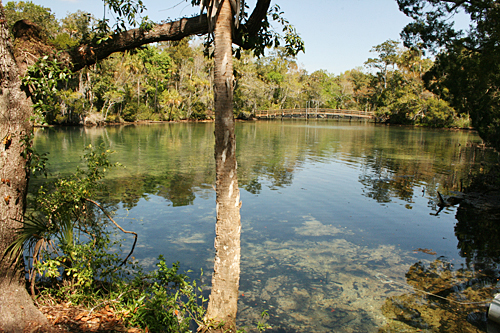
I had come to town specifically to visit the Homosassa Springs State Wildlife Park, famous as the home to a second magnitude spring where six female manatees live in captivity. The park has been a tourist attraction since the early 1900’s, when trains stopped to let passengers rest at the spring while crabs, cedar, and barrels of salted mullet were loaded aboard (old-timers willingly divulge that during prohibition many of the barrels actually held moonshine). Beginning in 1940, the site was operated as an attraction by various commercial entities. In 1984, the Citrus County Commission purchased the attraction to protect it as an environmentally sensitive area. Today the park is owned by the State of Florida and operated by the Department of Environmental Protection.
To provide the best possible view of the spring, previous owners of the park, then called Homosassa Springs Attraction, installed a floating underwater observatory in 1964. The 168-ton structure, officially named the “Fish Bowl,” allows visitor to see a large variety of fresh and saltwater fish and turtles, all of which can travel unrestricted between the headwaters of the spring and the Gulf of Mexico. However, it is the park’s six permanent residents – West Indian manatees – that most interested me.
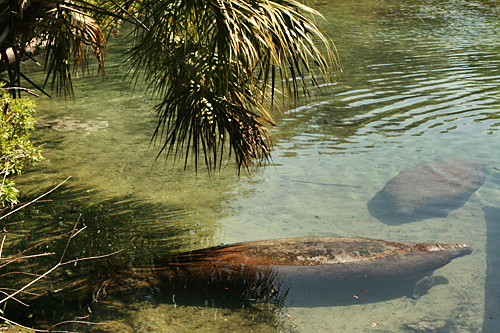
I arrived in time for the 10:30 am manatee show and grabbed a spot on the metal bleachers. As the park volunteer began telling us about these giant mammals, all six of them slowly swam toward us. They ignored the carrots he had thrown into the water and hovered near shore, as if waiting for something to happen. Soon, the volunteer waded into the crystal clear near-shore water holding aloft a silver metal container. The manatees surrounded him, nudging him ever further out toward a shelf that dropped off into a deep blue hole. I held my breath, sure they would force him over the edge, but just as I thought he was doomed, the manatees stopped pushing and rolled over onto their bellies, giant arms and short elephant snouts sticking out of the water, begging for their favorite snack – slices of sweet potatoes.
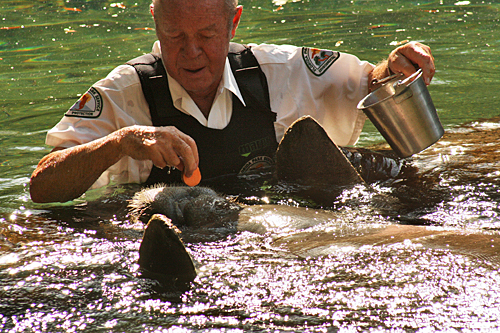
After the show, I descended into the bowels of the Fish Bowl, which is built directly over the spring. Whether it is the depth of the water or the flow of the second-magnitude springs, this appears to be a favorite gathering place for fish. Through the underwater windows I watched massive schools of fish swim by, hover, and turn in unison, as if responding to some some signal audible only to them. Frequently, curious manatees swam through the fish and up to the windows to look at me, making me wonder which of us was really on display.
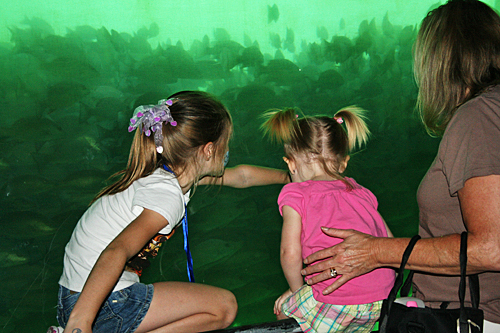
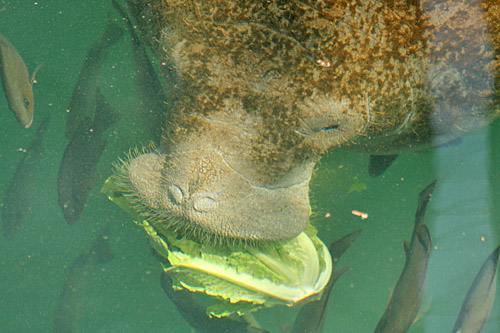
When I’d had my fill of watching these gentle giants, I set off to discover the rest of the park. A boardwalk led me along the shores of the Homosassa River, where boaters, kayakers, and snorkelers interacted with manatees in the wild, including one mother and baby calf.

Crossing to the other side of the river, I discovered an unexpected bonus – a Wildlife Park that showcases native Florida wildlife. With black bears, bobcats, white-tailed deer, alligators, crocodiles, river otters, red wolves, red foxes, and an amazing diversity of birds, this park may just be the best one I have ever visited.
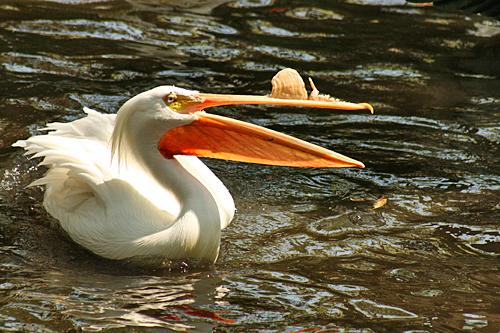
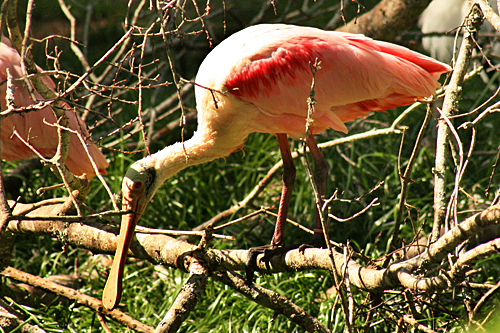
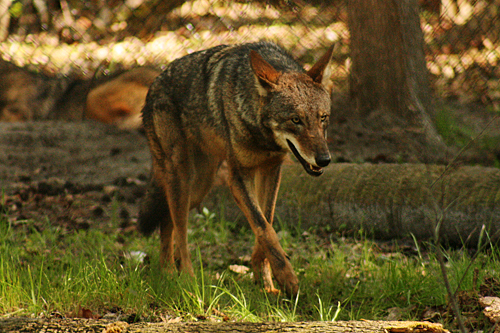
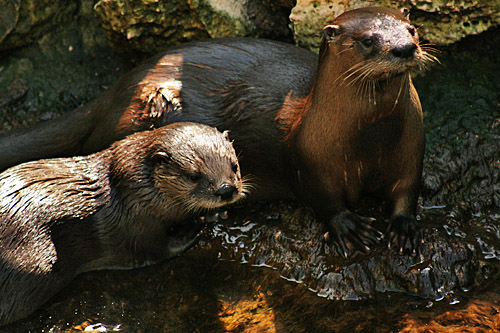
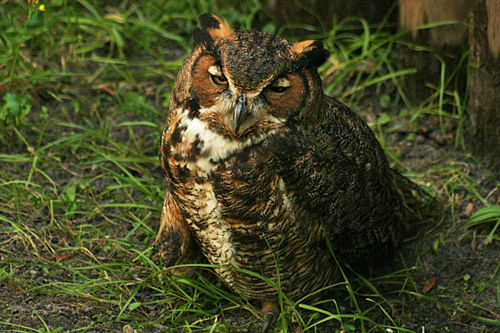
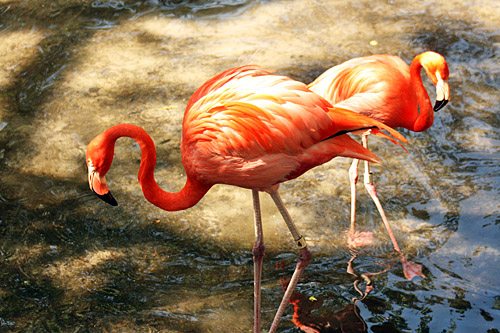
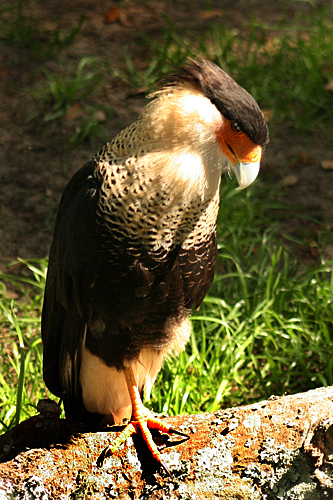
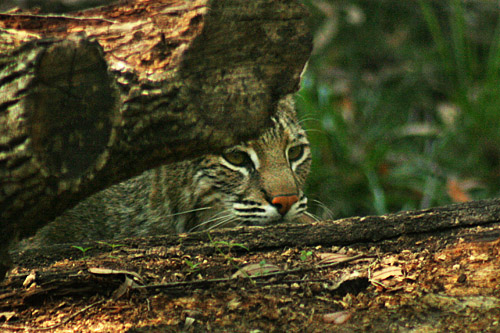

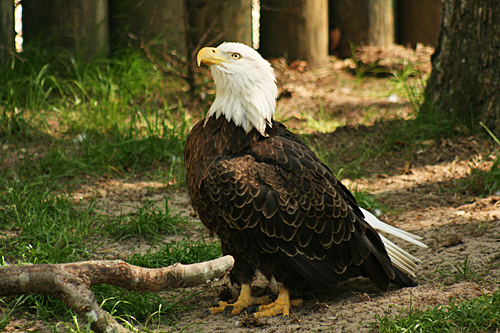

The employees and volunteers are all helpful and friendly, and all seem to be well-informed about the wildlife. I was especially curious about the Florida panther, who seemed hesitant to come out into the open. Every so often he would stick his nose out of the open door of his cage, located at the rear of a large grassy habitat. Taking one tentative step outside the cage, he scanned warily from side to side, but then retreated. A park volunteer explained that the panther was a new addition. Known as Don Juan because he has sired so many progeny, as he got older the panther started appearing more and more often in populated areas. For the panther’s own safety, it was decided to capture him. I felt privileged to see him, as there are only 50 known Florida panthers remaining in the wild.
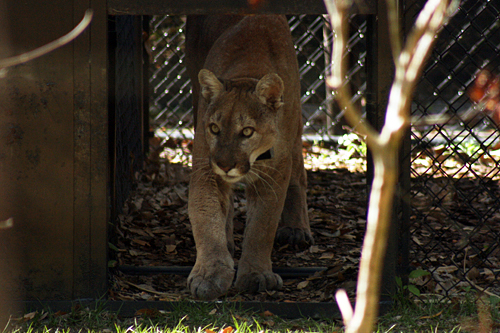
Another unique resident of the park is Lu the Hippo. While hippos are obviously not a species native to Florida, Lu hails back to the days when this was an exotic animal park. Lu was a big movie star and lived at the park between starring roles, becoming a popular attraction with the locals. When the State took over management of the park they intended to relocate the hippo, but residents got wind of the effort and mounted a successful opposition. As a result, Lu was granted honorary state citizenship and will spend the remainder of his life at the park.
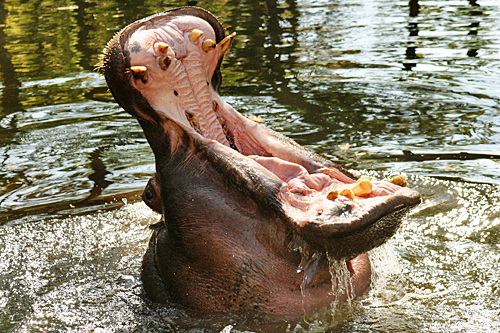
Having thoroughly investigated the park, I headed for Old Homosassa. Along the way I stopped at Yulee Sugar Mill Ruins, a small State Park on State Road 490 that contains remnants of the once-thriving 5,100-acre sugar plantation that was the only antebellum sugar mill in the United States. The steam-driven mill operated from 1851 to 1864 and served as a supplier of sugar products for southern troops during the Civil War. With its forty-foot limestone masonry chimney, iron gears, and a cane press, the site is definitely worth a visit.
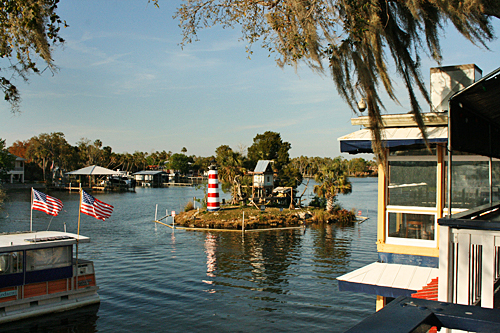
The village was just a few miles further, and I gratefully grabbed a table on the upstairs deck of the Riverside Crab House, where the sun set over the river as I watched the antics of the spider monkeys on Monkey Island. As with every other place I have visited in this unique corner of “Old Florida,” the folks were welcoming and gracious. I loved Homosassa and Dunnellon (read my previous posts about Dunnellon’s Historic Boomtown District and Rainbow Springs State Park), but the best is yet to come. Next up – I SWIM WITH THE MANATEES IN CRYSTAL RIVER!!! Stay tuned.

i grew up in homosassa and it is as beautiful now as it was then.
Barbara, great article! We haven’t visited Homosassa in a few years, and can’t wait to go back. Beautiful there! Very nice pics too!
Lu’s real name is Lucifer… He was the hippo on DAKTARI as I recall and did several other movies as well… The wildlife park also had another “star” for a many of years… A bear named “Ben”, also known as “GENTLE BEN” from the TV series… When I was a kid we were able to feed him peanuts and pet him… It was a great experience… As a child we use to swim to the park after hours and swim in the fishbowl with all the fish… Man was that fun! Nice article…
Brian Randolph
.-= Brian Randolph´s last blog ..White Oak Plantation =-.
Hi Brian:
Thanks for the interesting facts. What a hoot that you got to swim around in the park after hours. I trust that it wasn’t in the alligator pond!
Barbara
Thank You for that info. I was searching the net and stumbled across this blog thinking I was gonna waste my time but I was very wrong. long island basement
The pictures tell that the park is truly a place where you can both rest and enjoy nature and wildlife at the same time. I wonder if visitors can feed the manatees too, just like the volunteers. That would be lovely.
As volunteers for the Park, my husband Ray & I appreciate your article. It’s so nice to hear such lovely things. We enjoy it as much as the visitors do.
Your photographs were great. Glad you enjoyed your time with us. Please come back and visit soon!
Steffi & Ray Finnerty
Great pictures and great story, I grew up in old homosassa in the 50’s and remember the park well, there was a fish bowl back than, but i guess it was replaced in 64 with a better one. I remember working part time at the riverside inn, as it was called then,in the bait store. Thanks again for the story and the pictures. John Spanos.
My husband and I volunteer at the Park, and we both enjoyed the wonderful pictures that you took. Thank you very much for sharing all of them with us.
Lucille Frost
I so enjoyed your article. I have been to this park many times with my family and EVERY time have completed enjoyed it. The people are so informative and friendly. It is a great service they are doing and we are fortunate to have so many dedicated people. This makes it possible for all of us to be able to enjoy the animals.
This is a great glimpse of a wonderful place. My husband volunteers at the Park, and it is a wonderful experience for him. Your pictures are wonderful – thank you for sharing.
Wow, great pictures of the wildlife here at the Park. The volunteer you see feeding the manatee is George Schultz. He come down here from Canada each winter and takes care of Lu and the Ladies. He has volunteered over 11,000 hours to this park. Swimming with a manatee is an experience that will not be forgotten.
Enjoy your day,
Shirley Dube
What a great article! Thanks for so many wonderful words about our Park. I certainly will forward it to all people here at the Park and to friends in Homosassa as well.
Love,
Gail